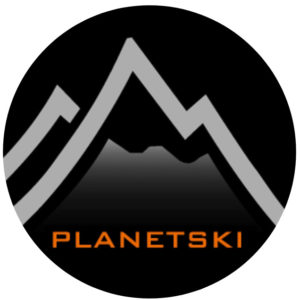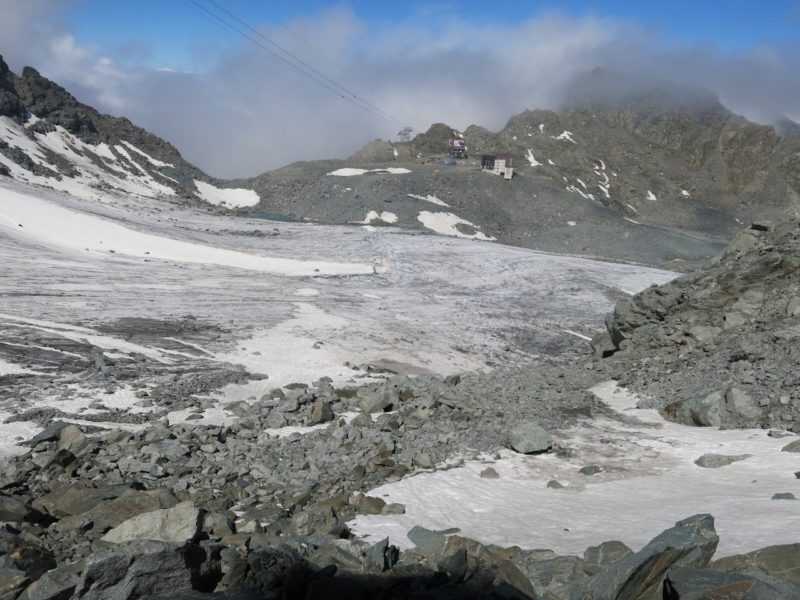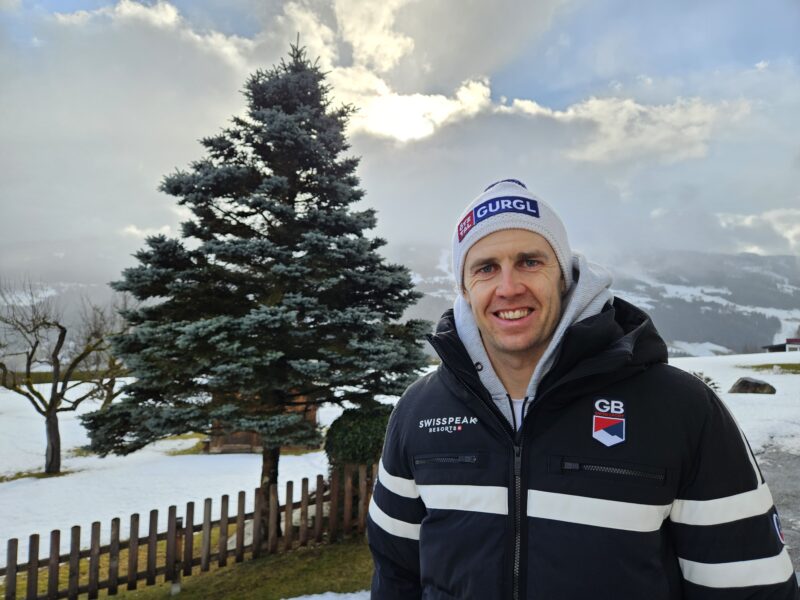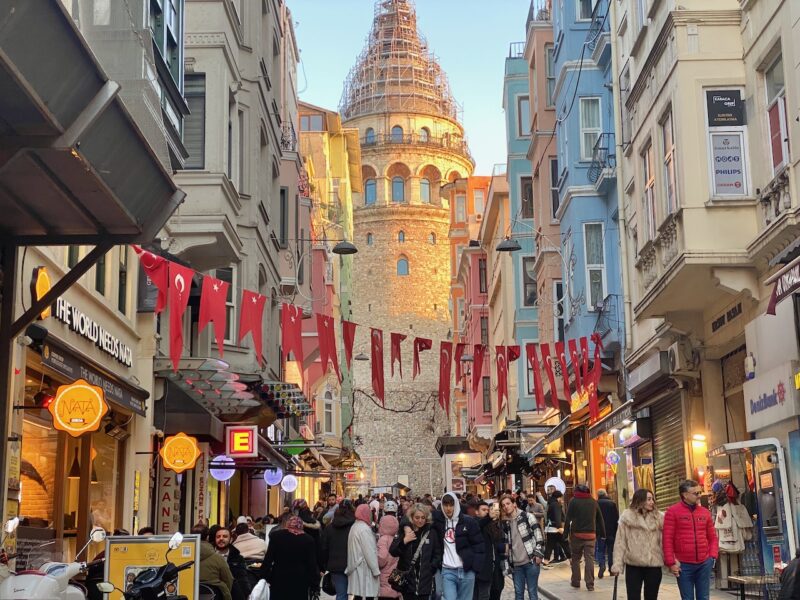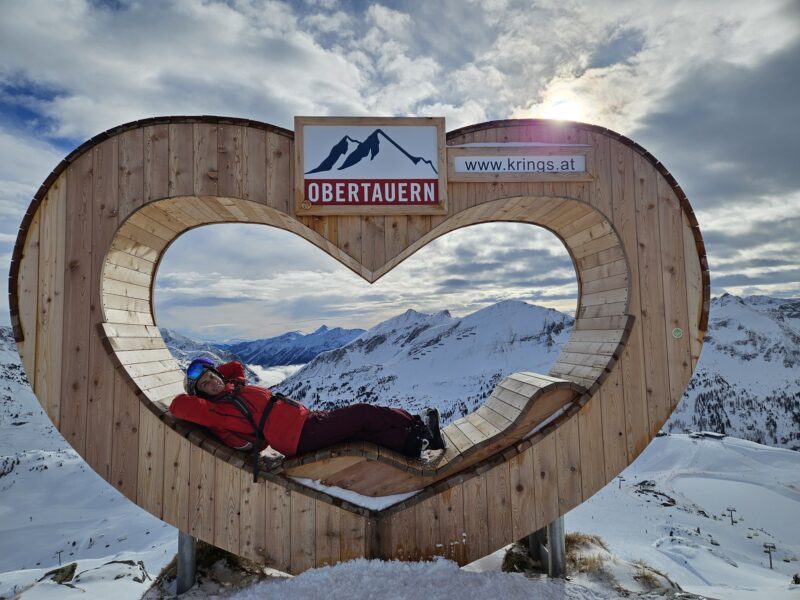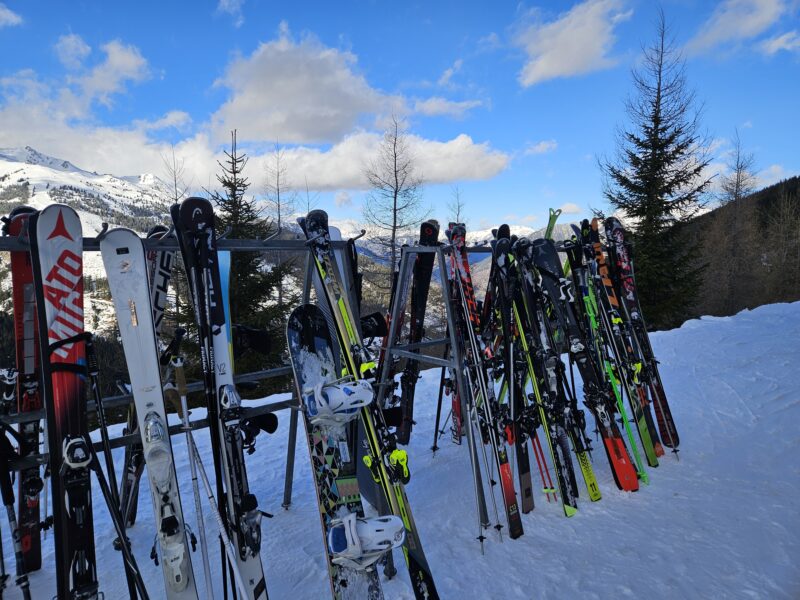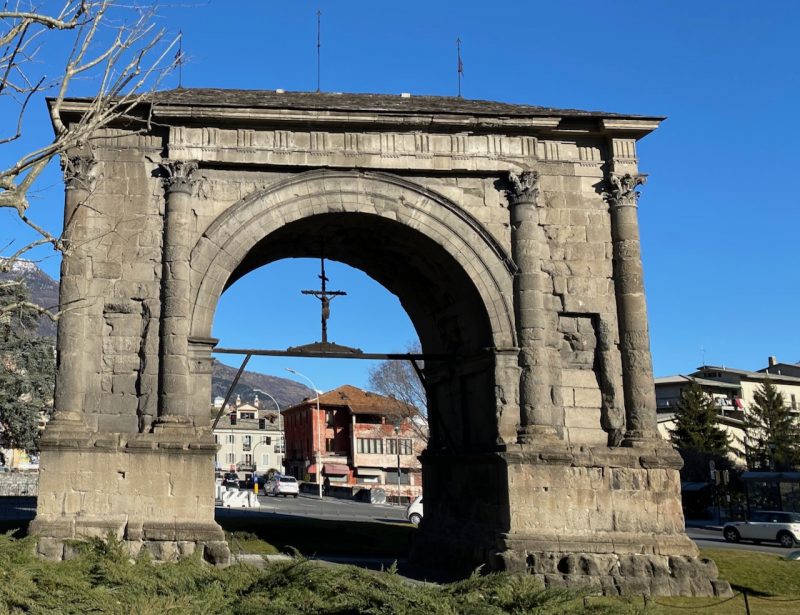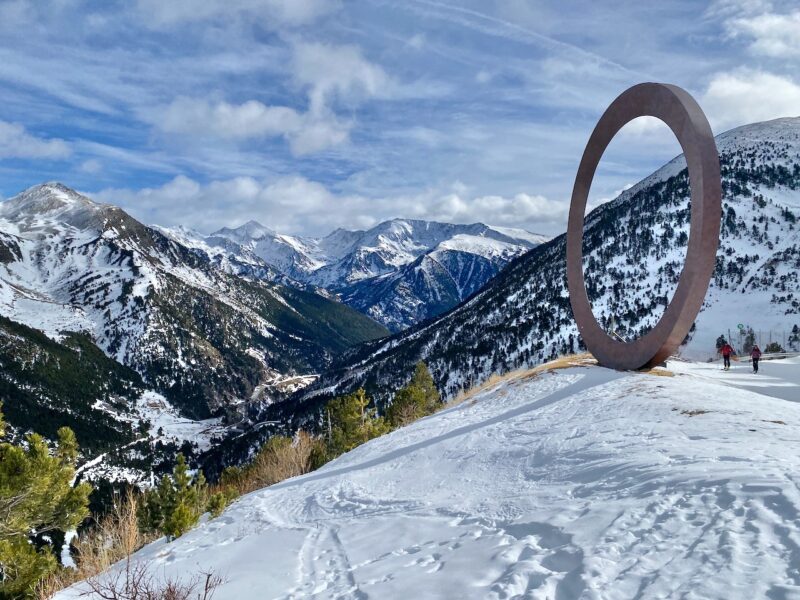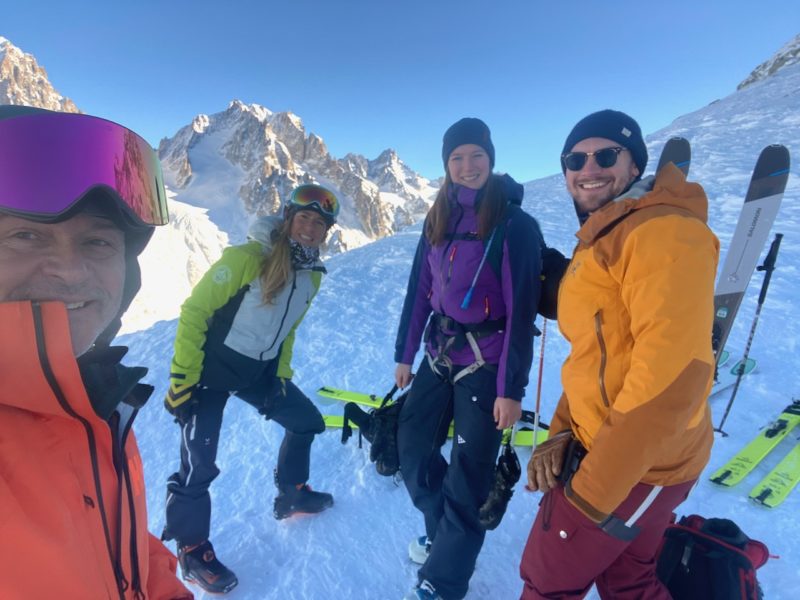Skiing & Healing in Gastein
30th January 2024 | Jane Peel, Bad Gastein, Austria
Last modified on February 2nd, 2024
PlanetSKI’s Jane Peel has just spent some time in Bad Gastein in Austria. For the skiing, obviously. But she’s also been enjoying – or perhaps enduring – the strangest experience she’s ever had on a ski trip.
Never in a million years did I expect to be doing what I did on my last day in the Gasteinertal.
It started with a detailed medical questionnaire and a consultation with a doctor who took my blood pressure.
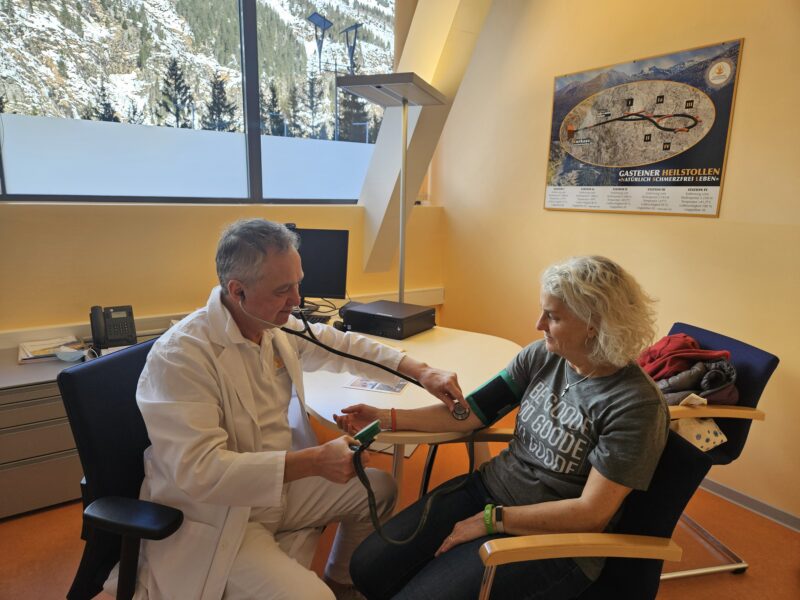
Blood pressure check. Image © PlanetSKI
Not because there’s anything wrong with me but because I’m about to undergo something very unusual.
But, first things first.
The place and the skiing.
BAD GASTEIN
The town is not your typical Austrian resort with cute, traditional chalets.
The buildings are grand and appear to perch precariously on the edge of the mountain.
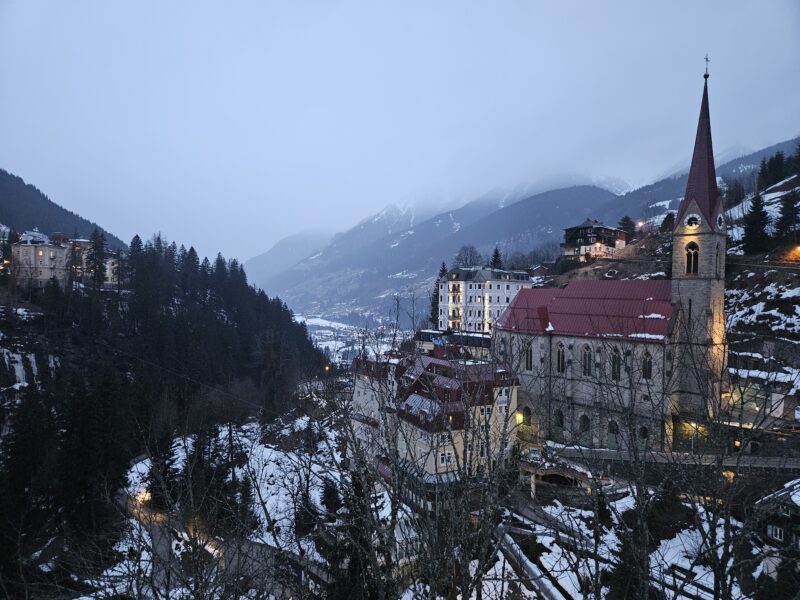
Bad Gastein, Austria. Image © PlanetSKI
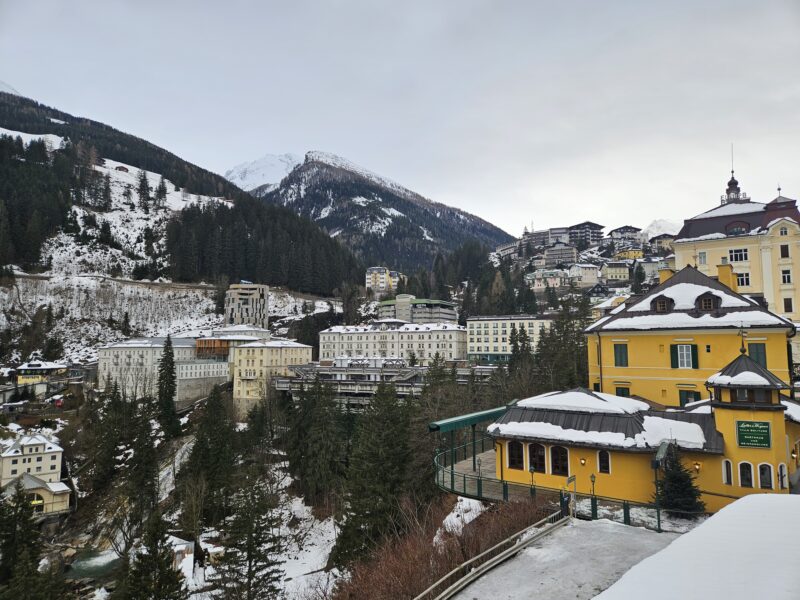
Bad Gastein, Austria. Image © PlanetSKI
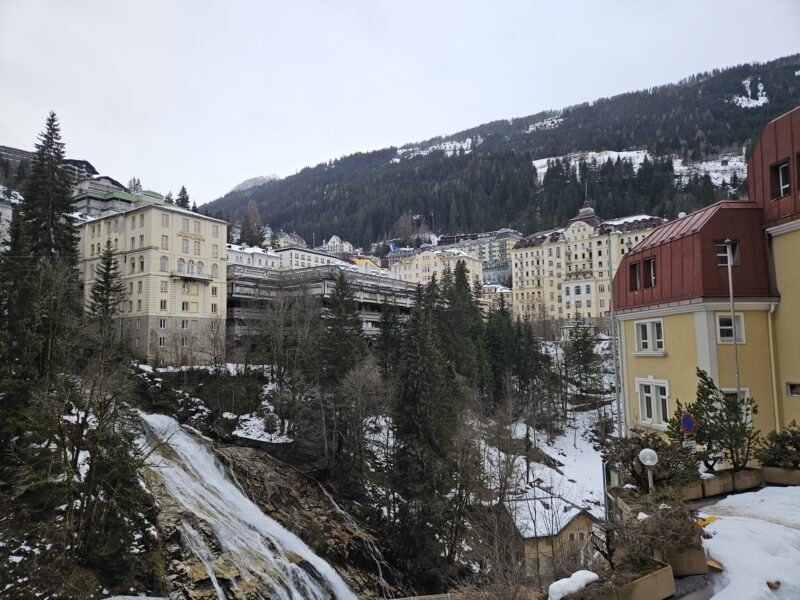
Bad Gastein, Austria. Image © PlanetSKI
Its buildings date from the Belle Époque era of the late 19th Century when this place was favoured by European royalty.
Some hotels have recently been restored to reflect their former opulence.
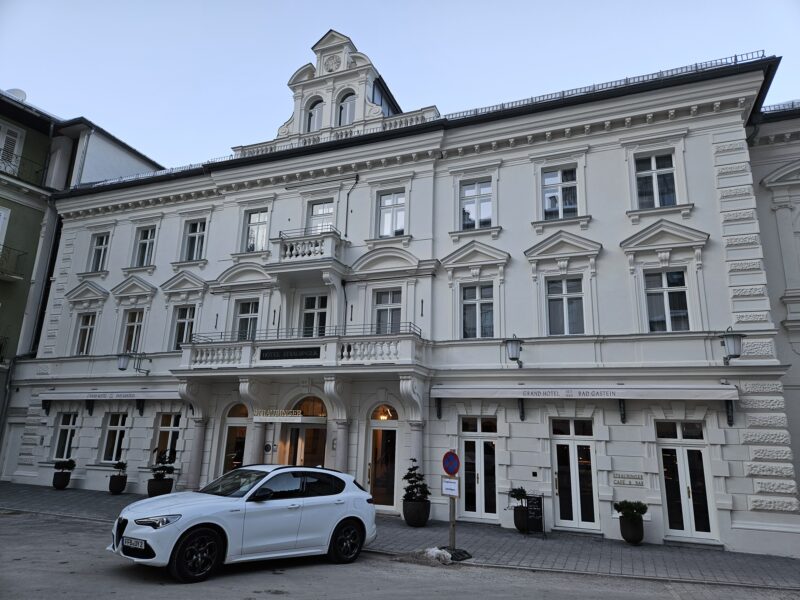
Straubinger Hotel, Bad Gastein. Image © PlanetSKI

Straubinger Hotel, Bad Gastein. Image © PlanetSKI
Like increasing numbers of mountain destinations, Bad Gastein has a zip wire, “Flying Waters”.
But, unlike most, it’s not an adrenalin-fuelled high-speed descent.
Rather a slow, gentle glide for 300 metres across the valley from one side of the town to the other.
There’s plenty of time to enjoy the view and the much faster moving waterfall below.
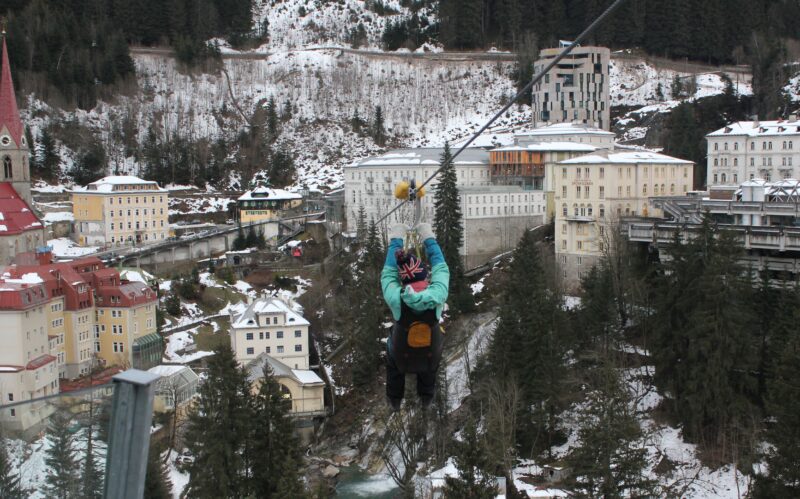
PlanetSKI’s Jane Peel hanging around over the Bad Gastein waterfall. Photo © Daniel Elkan
SKIING IN GASTEINERTAL
Gastein is Salzburg’s highest non-glacier ski area.
The valley has four base stations with more than 200km of pistes in total.
The skiing is from 830 metres altitude up to almost 2,690m.
There are three separate villages in the main ski area: Dorfgastein, Bad Hofgastein and Bad Gastein.
Each has access to the mountain via gondola.
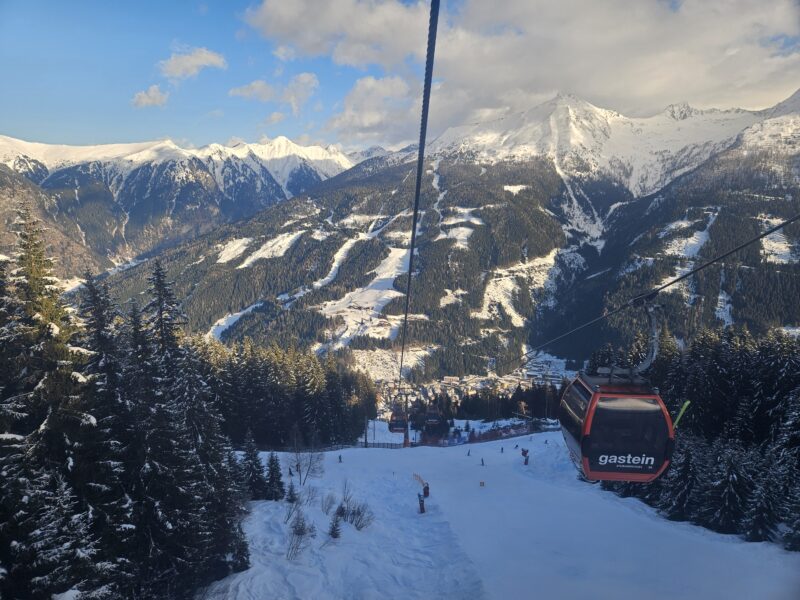
Gastein, Austria. Image © PlanetSKI

Gastein, Austria. Image © PlanetSKI
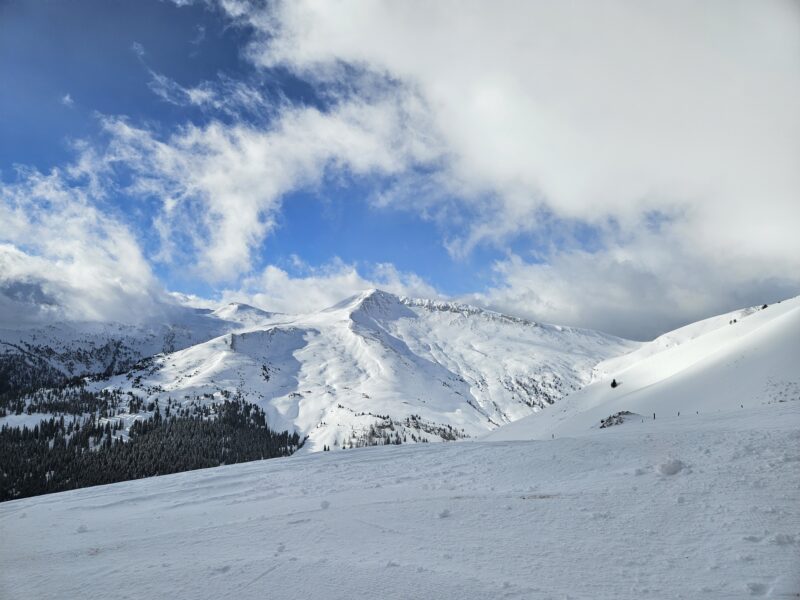
Gastein, Austria. Image © PlanetSKI
There are plenty of Instagrammable opportunities.
At the top of Stubnerkogel is the Hanging Bridge, suspended 28 metres above the ground.
The further you get to the middle, the more it moves.
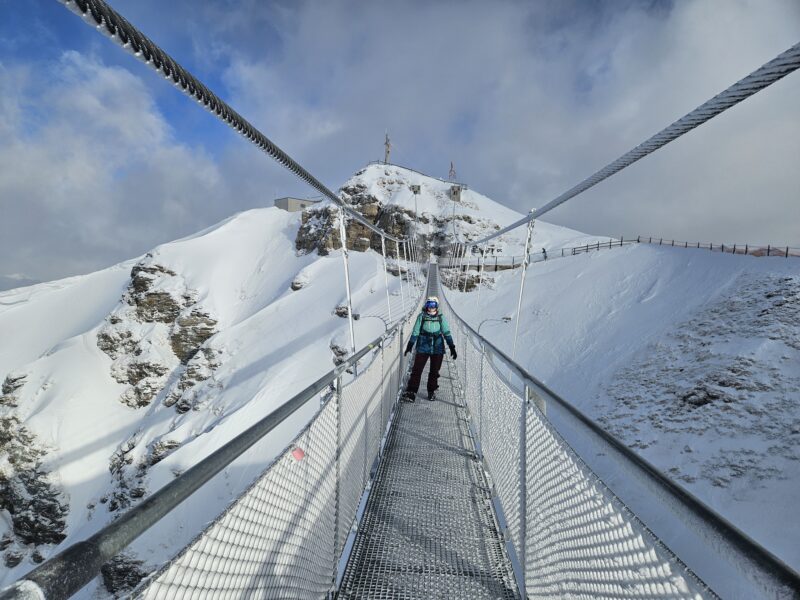
Hanging bridge, Gastein, Austria. Image © PlanetSKI
The fourth ski area is Sportgastein.
It’s accessible only by road.
It has the highest skiing.
The top of the Kreuzkogel mountain is 2,686 metres.
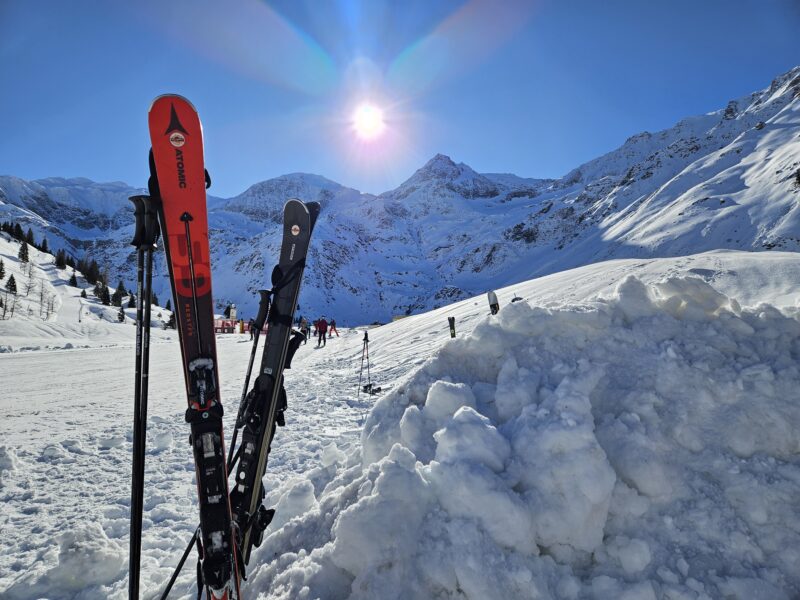
Sportgastein, Austria. Image © PlanetSKI
There is just one gondola and a t-bar.
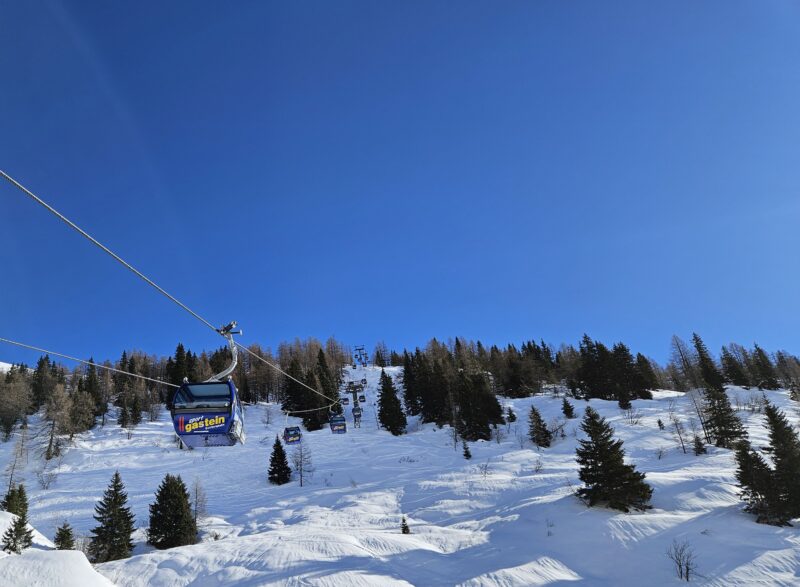
Sportgastein, Austria. Image © PlanetSKI
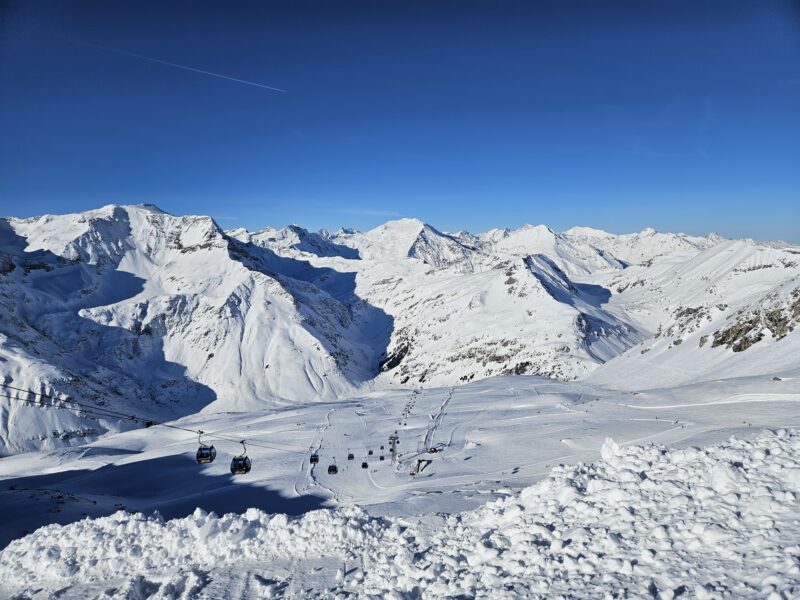
Sportgastein. Image © PlanetSKI
But don’t let that put you off.
There are several fabulous long, top-to-bottom runs.
Most of them are red but there’s at least one steep, challenging black and some fabulous freeriding in the National Park.
I was lucky enough to be there on a blue sky, windless day.
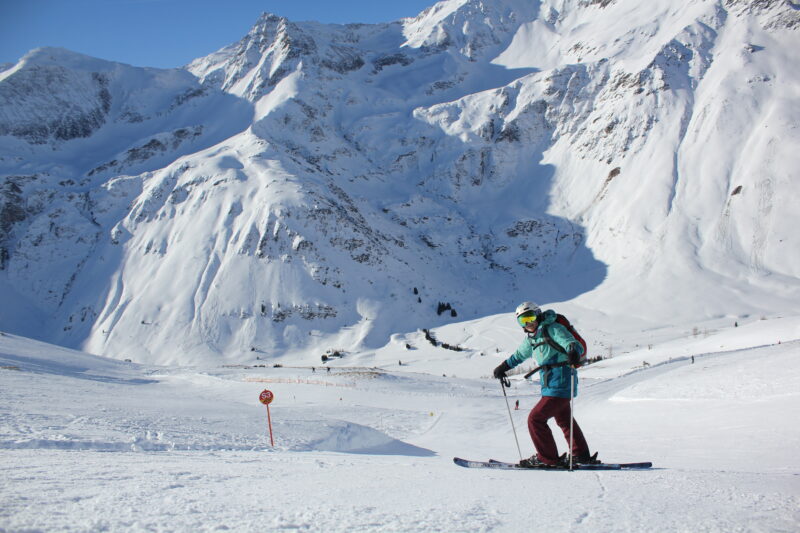
PlanetSKI on the slopes of Sportgastein, Austria. Image © Daniel Elkan
The day started off well, even before I’d made a single turn.
Right outside the top gondola station at Sportgastein is this.
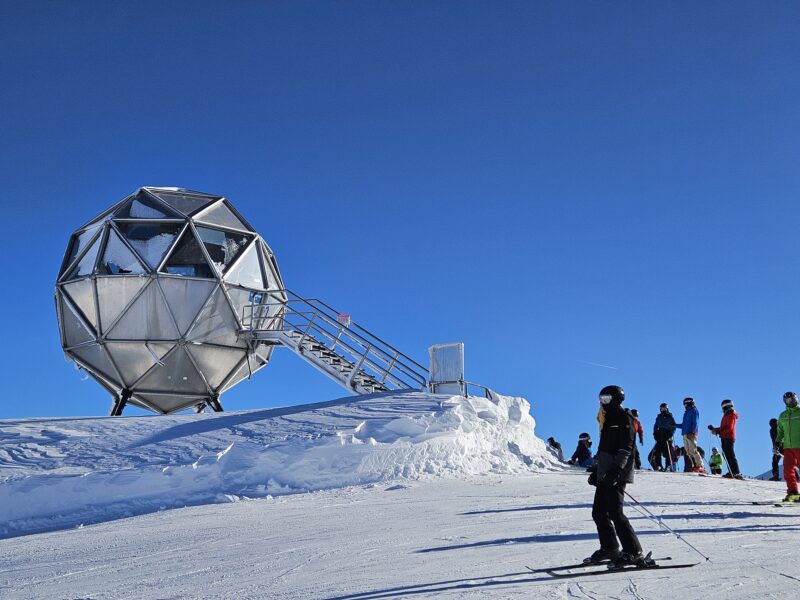
Sportgastein, Austria. Image © PlanetSKI
Inside it got more appealing.
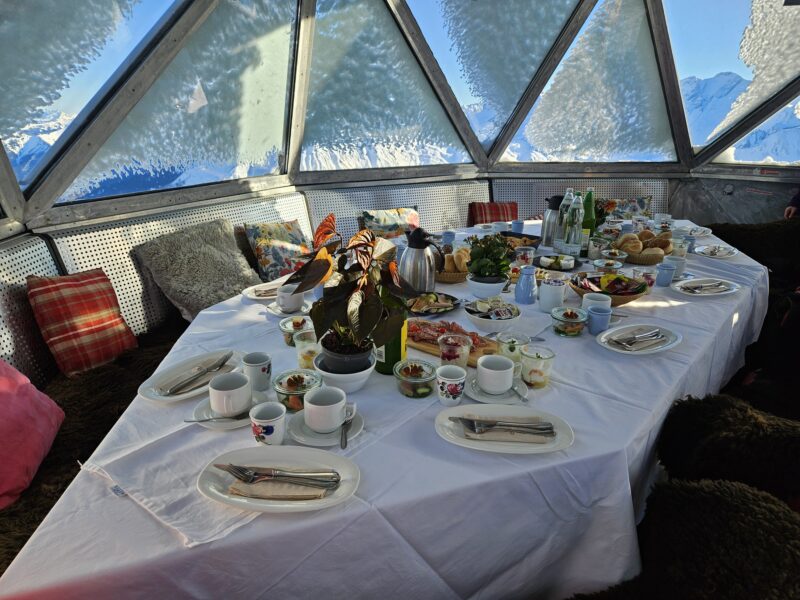
Breakfast, Sportgastein, Austria. Image © PlanetSKI
This is the Gipfelfrüstück Experience – the Top of the Mountain Breakfast.
A massive spread of food with juice, coffee and tea.
And it comes with your personal chef to cook you eggs and serve you a glass of fizz.
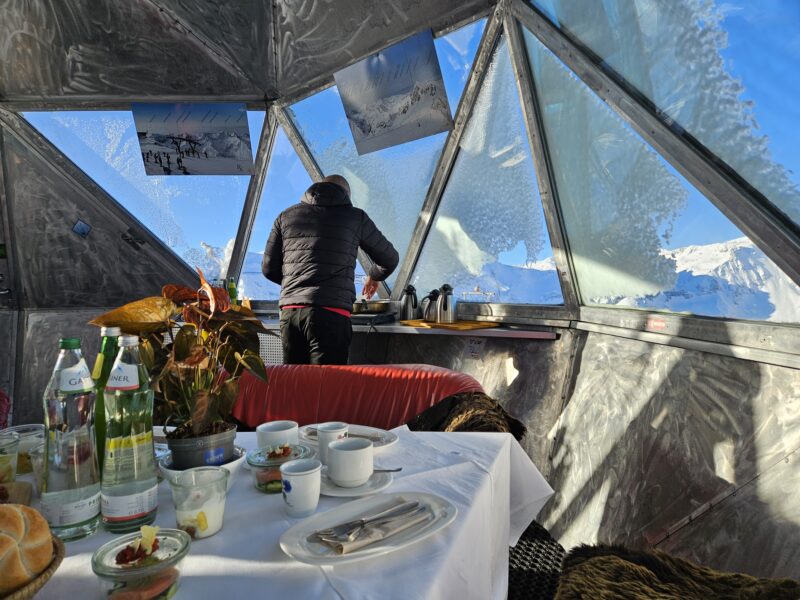
Top of the Mountain breakfast, Sportgastein, Austria. Image © PlanetSKI
It’s a great idea if you’re celebrating a special occasion.
The pod can be booked for breakfast for up to 12 people at a cost of €68 per person.
Then it was time to burn off the calories and enjoy the fantastic late-January conditions.
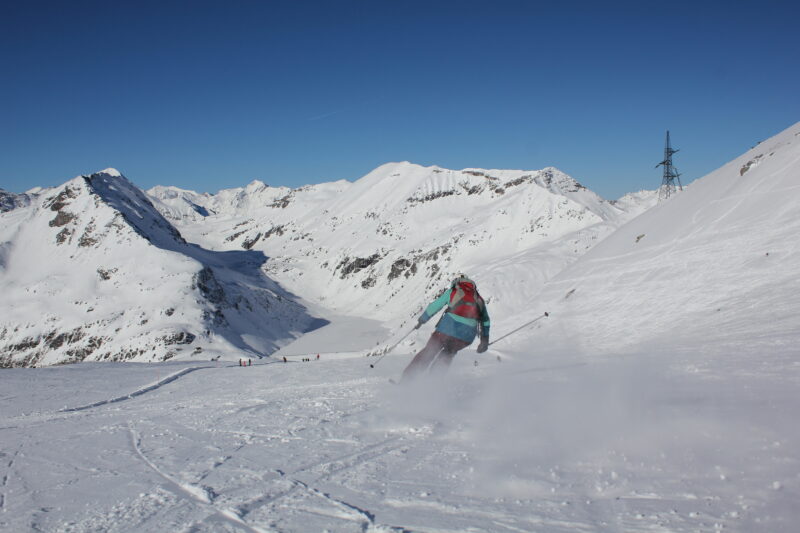
PlanetSKI enjoying the slopes of Sportgastein, Austria. Image © Daniel Elkan
A few more calories were expended on the short hike up to another of Gastein’s favourite Instagram spots on the Kreuzkogel summit.
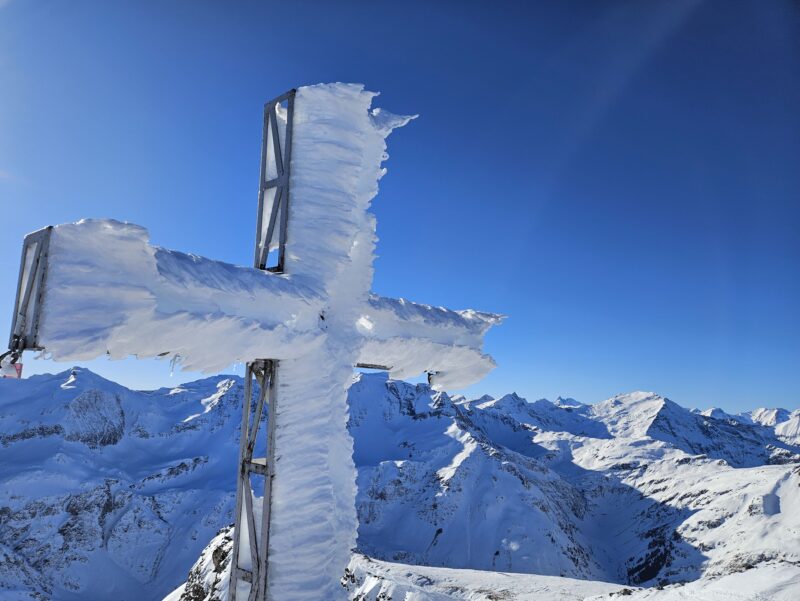
Cross at the summit, Sportgastein, Austria. Image © PlanetSKI
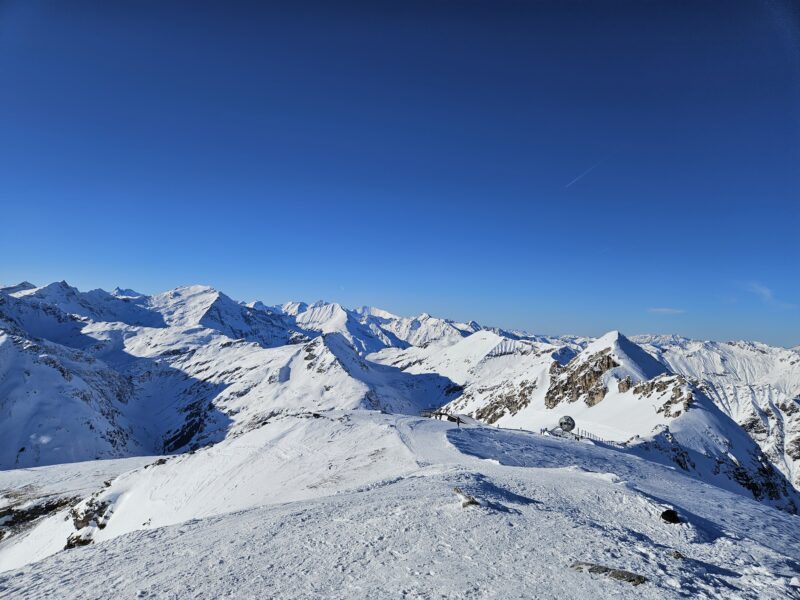
View from the cross at the summit with the top of the lift and the breafkast pod visible below. Image © PlanetSKI
SPA
If you’re muscles are in need of some care after a day on the mountain or, if you’re travelling with someone who’s not so keen on skiing or snowboarding – I know, it’s unthinkable – then thermal spas are everywhere in Gastein.
The clue’s in the name.
Bad = Spa in German.
All the big hotels have spas but for the full experience, the Alpentherme in Bad Hofgastein, is the place to be.
It’s the biggest public spa complex I’ve ever seen.
It covers 36,000 square metres.
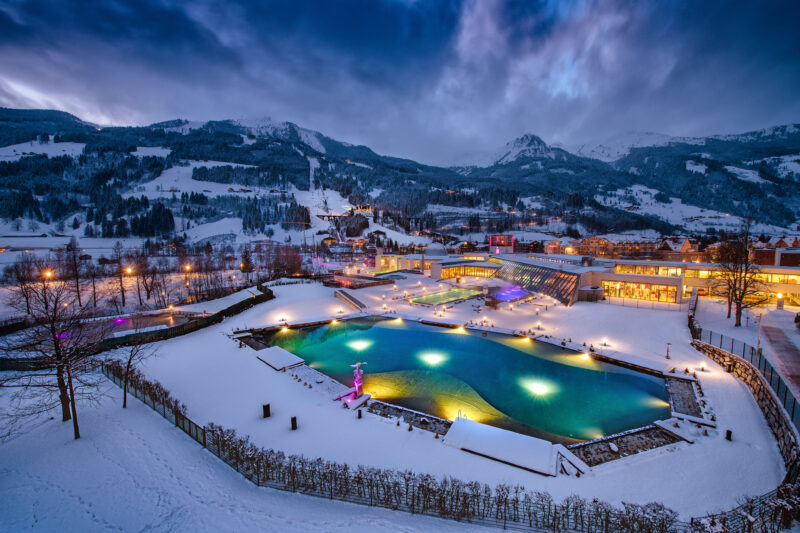
Alpentherme Spa, Gastein, Austria. Image © Fotoatelier Wolkersdorfer
GASTEIN HEALING GALLERY
And, finally.
The weirdest thing I have done.
On a ski trip? Definitely.
Ever? Probably.
Dressed only in a swimsuit and bathrobe, I took a miniature train 2km along a tunnel dug into the mountain with a load of men and women attired in the same fashion.
No cameras are allowed, so I have only the officially provided images.
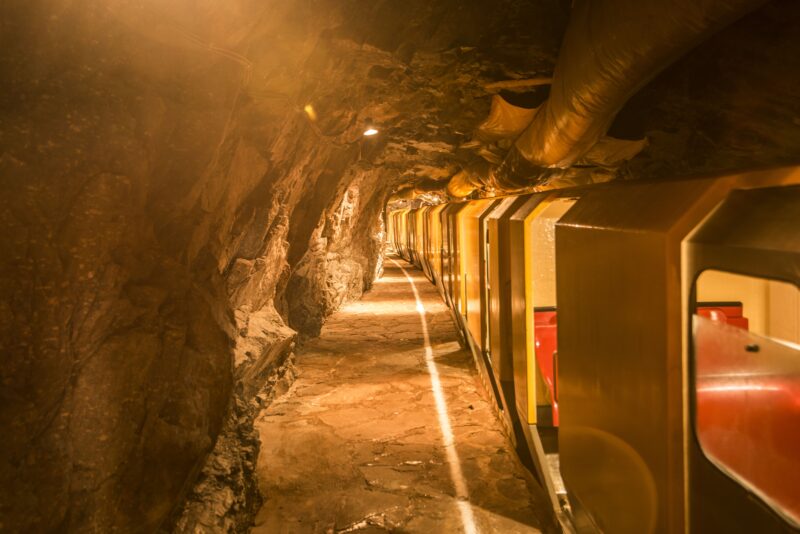
Transport into the Gastein Healing Gallery, Austria. Image © Gasteiner Heilstollen, steinbauer-photography.com
At my alloted station I disembarked and lay on a bed in 37 degrees temperatures for 40 minutes.
I was absorbing low levels of the radioactive Radon gas that is naturally occurring in these thermal caves.
It was eerie and much darker than the photo below suggests.
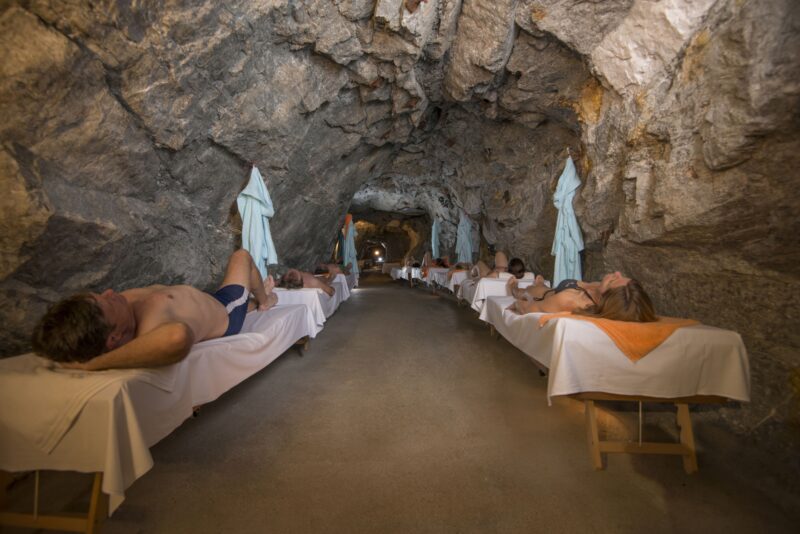
Gastein Healing Gallery, Austria. Image © Gasteiner Heilstollen, steinbauer-photography.com
Why would anyone do this?
Good question.
The train has been transporting patients into the tunnel since 1952 after a chance and groundbreaking discovery.
Goldminers digging into the mountain in the 1940s failed to find any of the precious metal here but, after working in the mine, reported that their rheumatic illnesses improved.
It was discovered that water vapour in the mine contained radon.
Several studies have since claimed that all sorts of conditions – including rheumatoid arthritis, fibromyalgia, asthma and even hay fever, can be alleviated by treatment in the Healing Gallery.
Ten thousand people come here every year, so they clearly believe it works.
“Pain and fatigue often improve significantly and pain medication can be reduced and often discontinued altogether,” says Medical Director, Dr Martin Offenbächer.
He’s the man taking my blood pressure in the photo at the top of this article.
A young man from Germany who I met on the train said he was trying the treatment for his rheumatoid arthritis, paid for by his health insurance.
A woman from Upper Austria with a back condition, who comes every year for around 10 sessions over a 3 week period, told me she feels the results within a week.
And, if you’re wondering, 10 sessions apparently expose patients to the same amount of radiation as one X-ray.
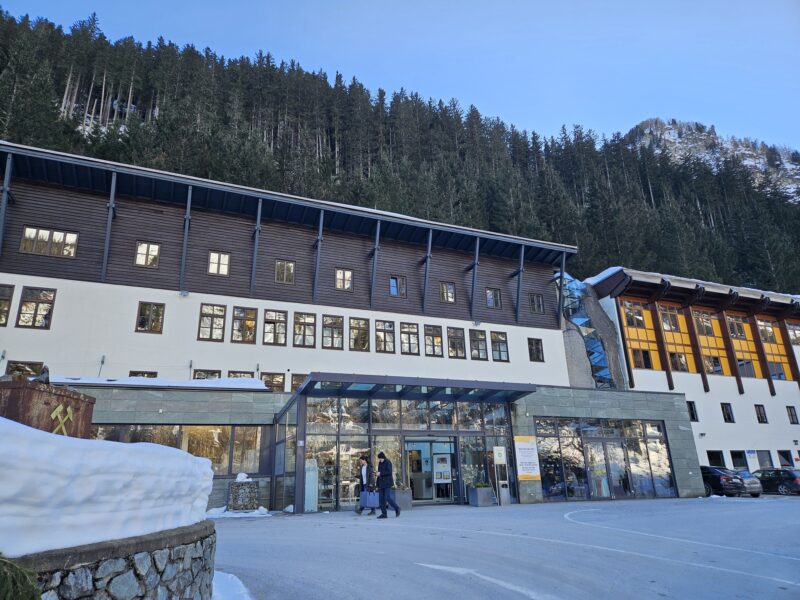
Gastein Healing Gallery, Austria. Image © PlanetSKI
I was there just for the one-off experience to see what it’s all about.
It’s definitely fascinating, whatever your view of the treatment.
But I’ll be happy to stick to more traditional forms of après ski in future.
MORE INFORMATION
- Bad Gastein & the Gasternertal ski area
- Gastein is part of the Ski Amadé network of 25 ski resorts in five regions in Austria.
- Gastein Healing Gallery
